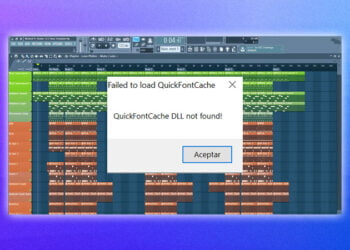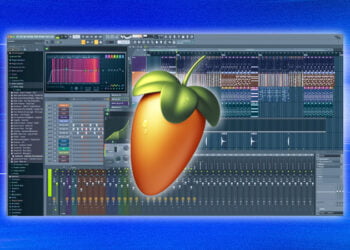One of the most popular digital audio workstations in the music industry is FL Studio, and with good reason.
It is incredibly powerful and allows you to create professional-sounding tracks regardless of your experience level.
One of the more interesting effects you can add to your music is a stutter effect, which can help add an extra layer of depth and movement to your production.
In this blog post, we will be exploring how to create a stutter effect in FL Studio.
We will be looking at how to use specific plugins, as well as tips and tricks on how to get the best possible sound from your stutter effect.
By the end of this blog post, you will have a solid understanding of the tools and techniques needed to make a stutter effect in FL Studio.
So, if you’re ready to take your music production skills to the next level, let’s get started!
Create a new track with the audio clip you’d like to add stutter to
To make the stutter effect in FL Studio, the first step is to create a new track and add the audio clip you would like to apply the stutter to.
Once the track is in place, click ‘Channel’ in the main window and select ‘Stutter’ from the drop-down menu.
A new window will open with the options to add stutter to the track.
You can choose the length of the stutter, the frequency, and even customize the filter settings.
Click ‘OK’ when you’re done and the stutter effect will be applied to the track.
You can then listen back and adjust the settings as needed to get the perfect stutter you’re looking for.
Duplicate the audio clip
The next step in creating the stutter effect in FL Studio is to duplicate the audio clip.
This can be done by right clicking on the clip and selecting “Duplicate” from the drop down menu.
This will create an exact copy of the original audio clip.
You can also press the “Ctrl + D” keys on your keyboard to quickly duplicate the clip.
Now, you have two identical clips, and you can begin to create the stutter effect.
Set the “Fade Out” parameter to the desired length
Once you have selected a sample and opened the Fruity Stutter editor, the next step is to set the “Fade Out” parameter.
This parameter determines how quickly the stutter effect will fade out once the sample is triggered.
You can set it to a short length for a quick, sharp stutter effect, or to a longer length for a smooth, gradual effect.
Experiment with different lengths to find the sound that best suits your track.
Set the “Time Scale” parameter to achieve the desired stutter effect
Once you have selected your sample and created your PATTERN, it’s time to set your “Time Scale” parameter.
This parameter determines the timing of the stutter effect, so it’s important to make sure you have the right settings.
To do this, select the “Time Scale” parameter and set it to a value that reflects the length of the stutter you would like to create.
Experiment with the range of values until you achieve the desired stutter effect.
Once you have the effect you like, you can save the settings and apply them to other samples in the PATTERN.
When you play the clip, adjust the “Time Scale” parameter until you get the desired effect
The fifth step in the process of creating a stutter effect in FL Studio is adjusting the “Time Scale” parameter.
This parameter is found in the “Clip Properties” window, and it controls the speed of the clip playback.
You can use it to speed up or slow down the clip as you wish.
When you’ve adjusted the Time Scale to the desired effect, you will hear the stutter effect you’ve created.
Keep in mind that this parameter is adjustable in real-time, so you can make small adjustments until you reach the perfect sound.
Add a Fruity Parametric EQ to the track
Once you’re finished with the stutter effect, you’ll want to add some depth to your track.
A great way to do this is to add a parametric EQ to the track and give it a fruity twist.
Use a low-mid frequency boost to add some warmth to the track, and then boost the highs to give it some sparkle.
Experiment with different settings until you find something that adds that extra edge to your track.
Set the “Q” parameter to achieve the desired stutter effect
After setting all the parameters in the Fruity Delay 2 to achieve your desired stutter effect, you’ll need to adjust the “Q” parameter.
The Q parameter is a type of filter, and it controls the amount of frequencies that are allowed through your effect.
You can use this tool to create a wide range of unique stutter sounds, from subtle to extreme.
Start by setting the Q parameter to 0.
6 and slowly increase it until you achieve the desired effect.
Just remember to keep an eye on the sound level so that your output isn’t distorted.
When you play the clip, adjust the “Q” parameter until you get the desired stutter effect.
Once you have chosen a clip that you want to apply the stutter effect to, it is time to adjust the “Q” parameter.
The “Q” parameter is found on the FL Studio mixer and controls the amount of the stutter effect.
When the “Q” parameter is adjusted to a higher value, the stutter effect will be more pronounced.
Adjust the “Q” parameter until you get the desired stutter effect.
Be sure to check the clip in the song as you adjust the parameter.
If you want to add more stutter effect, increase the “Q” value.
If you want to reduce the effect, decrease the value.
Once you are satisfied with the stutter effect, you are ready to move on to the next step.
Conclusion
In conclusion, creating the stutter effect in FL Studio is a great way to add an interesting and unique twist to your compositions.
While it may take some practice to get the desired sound, it is an incredibly useful technique that can be used in a variety of different genres.
By utilizing the techniques outlined in this article, you can start to create your own unique stutter effects and add another layer of creativity to your music.
























